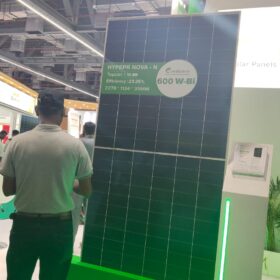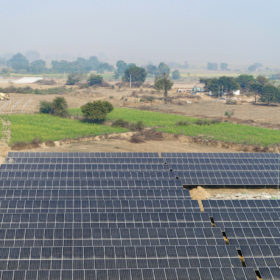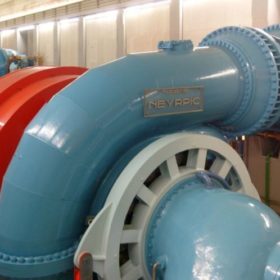Green hydrogen is becoming a key element in India’s transition to a sustainable and low-carbon economy. The National Green Hydrogen Mission launched last year aims to make India the global leader in the production, usage and export of green hydrogen and its derivatives. A major focus of the Mission is to identify and develop regions capable of supporting large-scale production or utilisation of green hydrogen, known as green hydrogen hubs.
The cost of producing green hydrogen largely depends on the price of renewable energy, the capital cost of electrolysers, and the cost of balance of plant. However, storage and distribution can be up to three times more expensive than production due to high-cost infrastructure like high-pressure cylinders, cryogenic tanks, and pipelines.
Hydrogen hubs, which are organised areas where production and utilisation facilities are closely linked, can make green hydrogen projects more viable. This cluster-based approach addresses the technical, logistical, and commercial challenges of long-distance hydrogen transport, enhances project viability, and allows for economies of scale and concentrated infrastructure.
Establishing such hubs within Special Economic Zones (SEZs) will provide policy incentives and financial benefits which will further reduce the cost and complexity of setting up green hydrogen facilities.

Image: Spice Route Legal
Hubs located near manufacturing and industrial zones can support infrastructure development and provide a concentrated demand for green hydrogen. Additionally, green hydrogen hubs around ports can also facilitate the import and export of green hydrogen and its derivatives at competitive pricing due to reduced transportation costs and logistical complexities.
To increase green hydrogen production capacity in India to 5 MMT per annum by 2030, the Government of India has rolled out the ‘Scheme Guidelines for setting up Hydrogen Hubs in India’ (Hydrogen Hubs Scheme) with a budget of INR 200 crore to establish two green hydrogen hubs by the financial year 2025-26. This initiative will support essential infrastructure, including storage and transportation facilities, pipeline development, refuelling stations, and technologies for hydrogen compression and liquefaction. Besides environmental benefits, developing green hydrogen hubs is expected to create jobs, boost local economies, advance hydrogen technologies, and attract investments in clean energy.
The Ministry of Ports, Shipping and Waterways has identified Deendayal, Paradip and V.O. Chidambaranar (Tuticorin) as three major ports to be developed as hydrogen hubs. V.O. Chidambaranar Port in Tamil Nadu has allocated 500 acres of land for a green hydrogen hub and a memorandum of understanding has been signed with the National Thermal Power Corp. Ltd (NTPC Ltd) to establish a green hydrogen production facility, which will make it India’s first green hydrogen hub. NTPC Limited has also signed an agreement with the Andhra Pradesh Industrial Infrastructure Corporation (APIIC) to develop an ‘Integrated Green Hydrogen Hub’ on 1,200 acres of land near Pudimadaka village in Visakhapatnam, Andhra Pradesh.
While the policy and regulatory framework for green hydrogen in India is still developing, it is evolving rapidly to meet India’s sustainability goals. Currently, most policies and incentives are designed for shorter durations. Industry experts suggest that due to the capital-intensive nature of the sector, where returns on investment are expected over a longer period, incentives should be extended for a longer duration. Additionally, reduction in taxes and duties on essential components for green hydrogen production would provide immediate cost relief and support the industry’s rapid growth.
Government policies and initiatives which mandate the use of clean energy sources are expected to create business opportunities in the green hydrogen value chain and attract significant private investment in green hydrogen’s production, storage, and distribution infrastructure.
The views and opinions expressed in this article are the author’s own, and do not necessarily reflect those held by pv magazine.
This content is protected by copyright and may not be reused. If you want to cooperate with us and would like to reuse some of our content, please contact: editors@pv-magazine.com.








By submitting this form you agree to pv magazine using your data for the purposes of publishing your comment.
Your personal data will only be disclosed or otherwise transmitted to third parties for the purposes of spam filtering or if this is necessary for technical maintenance of the website. Any other transfer to third parties will not take place unless this is justified on the basis of applicable data protection regulations or if pv magazine is legally obliged to do so.
You may revoke this consent at any time with effect for the future, in which case your personal data will be deleted immediately. Otherwise, your data will be deleted if pv magazine has processed your request or the purpose of data storage is fulfilled.
Further information on data privacy can be found in our Data Protection Policy.